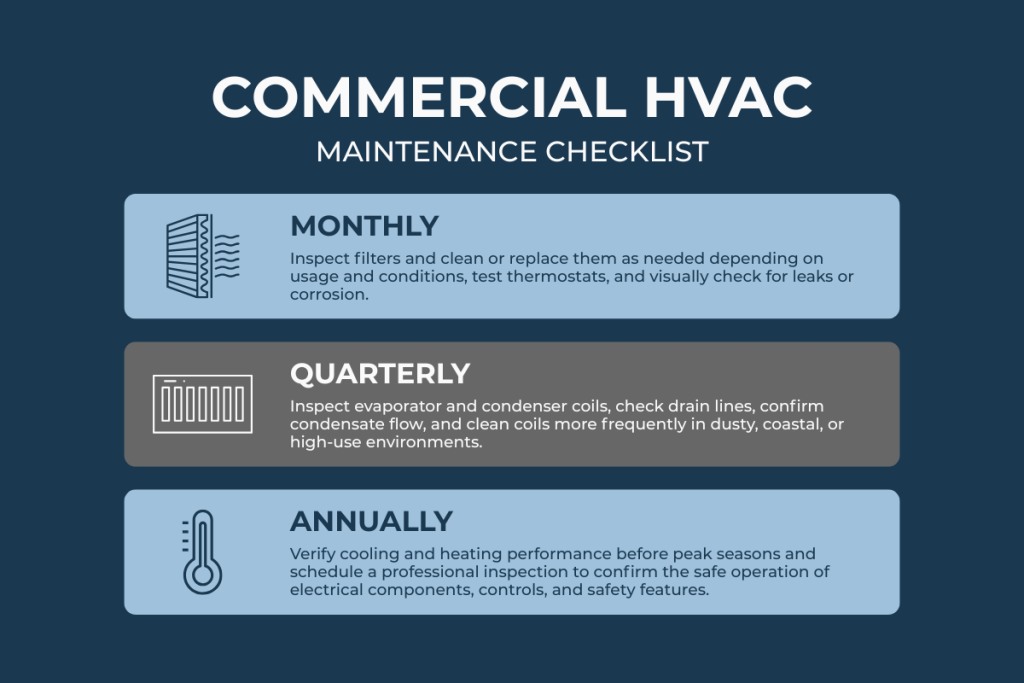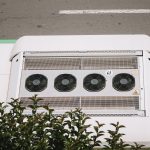Keep Systems Reliable Across Every Property
For multi-property teams, success means uninterrupted comfort. One failed system can create guest complaints, emergency calls, and higher labor costs. When you manage many rooms across locations, small issues compound quickly. PTAC units — whether new or reconditioned — are one tool property teams use to simplify room-level heating and cooling. This article focuses on actionable HVAC system maintenance practices you can implement today to reduce downtime and keep operations predictable.
Why a Maintenance-First Mindset Prevents Downtime
Shifting from reactive repairs to preventive maintenance changes the game. Instead of fixing what’s broken, you identify patterns and eliminate the root causes that lead to emergency calls. For multi-property portfolios, this approach protects guest experience and reduces total cost of ownership.
Key operational benefits:
- Fewer emergency service visits and after-hours labor
- More predictable maintenance budgets and fewer surprise capital expenditures
- Faster turnaround on rooms during turnovers or seasonal demand spikes
This isn’t just about cleaning filters. It’s about establishing systems—schedules, KPIs, and inventory practices—so a minor issue doesn’t become a property-wide outage.
Operational Checklist for Multi-Property Teams
Create a reliable commercial HVAC maintenance checklist tailored to your portfolio, with the goal of ensuring consistency: every unit inspected, every repair documented, and trends tracked across properties.
Core checklist elements should be adapted by property type, whether hotel, dormitory, or senior living.
On a monthly basis, inspect filters and clean or replace them as needed depending on usage and conditions, test thermostats, and visually check for leaks or corrosion.
Quarterly, inspect evaporator and condenser coils, check drain lines, confirm condensate flow, and clean coils more frequently in dusty, coastal, or high-use environments.
Annually, verify cooling and heating performance before peak seasons and schedule a professional inspection to confirm the safe operation of electrical components, controls, and safety features.
Quick checklist you can copy into a work order system:
- Replace/clean filters
- Clean intake/exhaust grilles
- Inspect coils & fins
- Verify condensate drain flow
Document everything. A centralized log (even a simple shared spreadsheet or CMMS note) lets you spot failing models, recurring faults, and buildings that need a capacity upgrade before problems escalate.
Fast Repair and Replacement Strategies That Cut Downtime
When units do fail, speed and planning determine how long rooms remain out of service. Build systems that shorten the time from fault to fix.
Practical tactics that work:
- Maintain a small, prioritized parts inventory of commonly failed components (filters, fan motors, control boards, capacitors).
- Partner with vendors that guarantee fast shipping of PTAC units and parts.
- Plan bulk PTAC replacements in aging properties—coordinating replacements reduces per-unit install cost and avoids repeated emergency fixes.
- Consider reconditioned PTAC units from trusted refurbishers that provide warranties, offering a cost-effective alternative in high-turnover assets.
A “fast-fix” kit per region (or per 10–20 units) dramatically shortens repair time. Train engineers on quick diagnostics and standardized swap procedures so a failed unit can be replaced and returned to service within hours, not days.
Seasonal and Training Practices That Reduce Failures
Most HVAC breakdowns are seasonal: systems pushed hard in summer or winter expose weaknesses that a preventive program can catch. Couple seasonal service with targeted training to magnify uptime gains. Seasonal playbook highlights include a spring pre-cooling check, during which coils are cleaned, airflow is verified, and cooling output is tested; a fall pre-heating check that tests heating elements and functions while running full-system diagnostics; and mid-season spot checks that target high-usage buildings after holiday occupancy spikes.
Two training priorities are giving on-site staff a clear set of PTAC system maintenance tasks they can perform between vendor visits, such as filter replacement, simple diagnostics, and basic drain cleaning, and using short SOPs (1–2 pages) for unit swap procedures so any certified tech can perform replacements consistently. KPIs to track include mean time to repair (MTTR), mean time between failures (MTBF), percentage of emergency calls versus planned maintenance, and room downtime hours per month. Even modest improvements in MTTR multiply across a portfolio.
Act Now: Reduce Downtime with Smarter Maintenance Choices
Preventive maintenance stops small problems from becoming business disruptions. By standardizing checklists, stocking fast-repair parts, leveraging rapid delivery options, and planning coordinated replacements, multi-property teams cut downtime and protect guest satisfaction.
When it’s time to replace, PTAC Units provides new and reconditioned PTAC units with bulk discounts, fast shipping, and reliable support, helping you reduce downtime even further.
For operations that want immediate wins, combining disciplined maintenance with smarter equipment choices pays off. Learn how energy-efficient strategies tie into long-term operational resilience and savings by checking out this resource: How energy efficiency in HVAC systems saves you money.
Take the next step: map your properties’ current maintenance cycle, identify the top 10 failure causes from the last 12 months, then implement a short-term parts inventory and seasonal checklist. You’ll see downtime fall and predictability rise.








